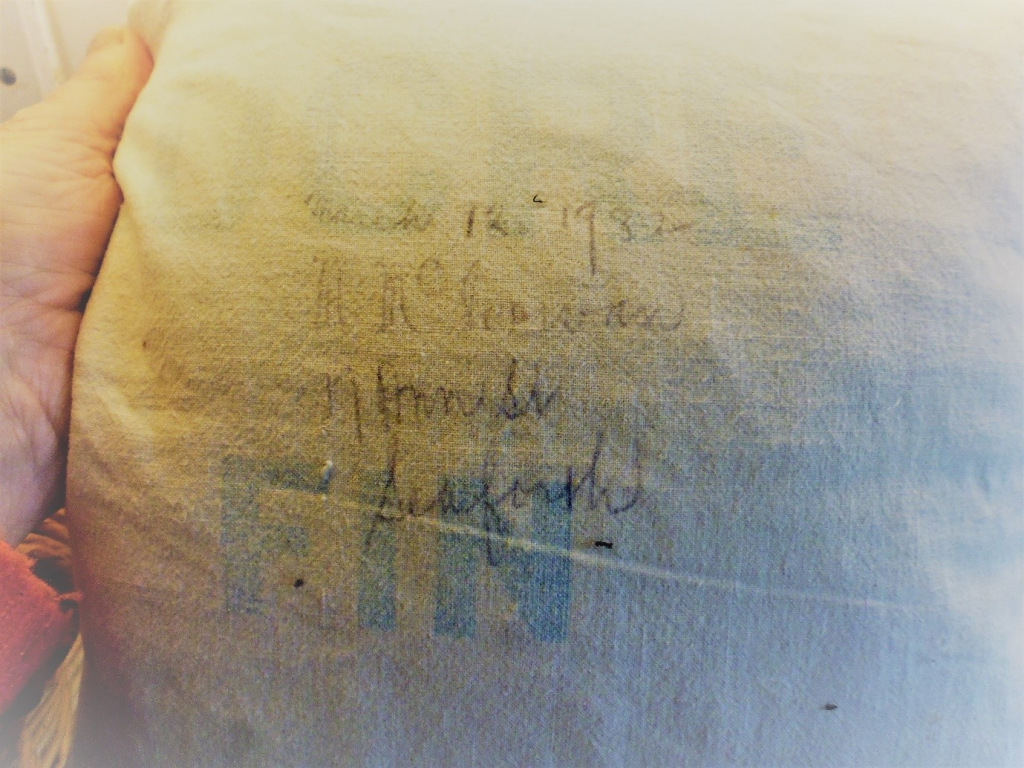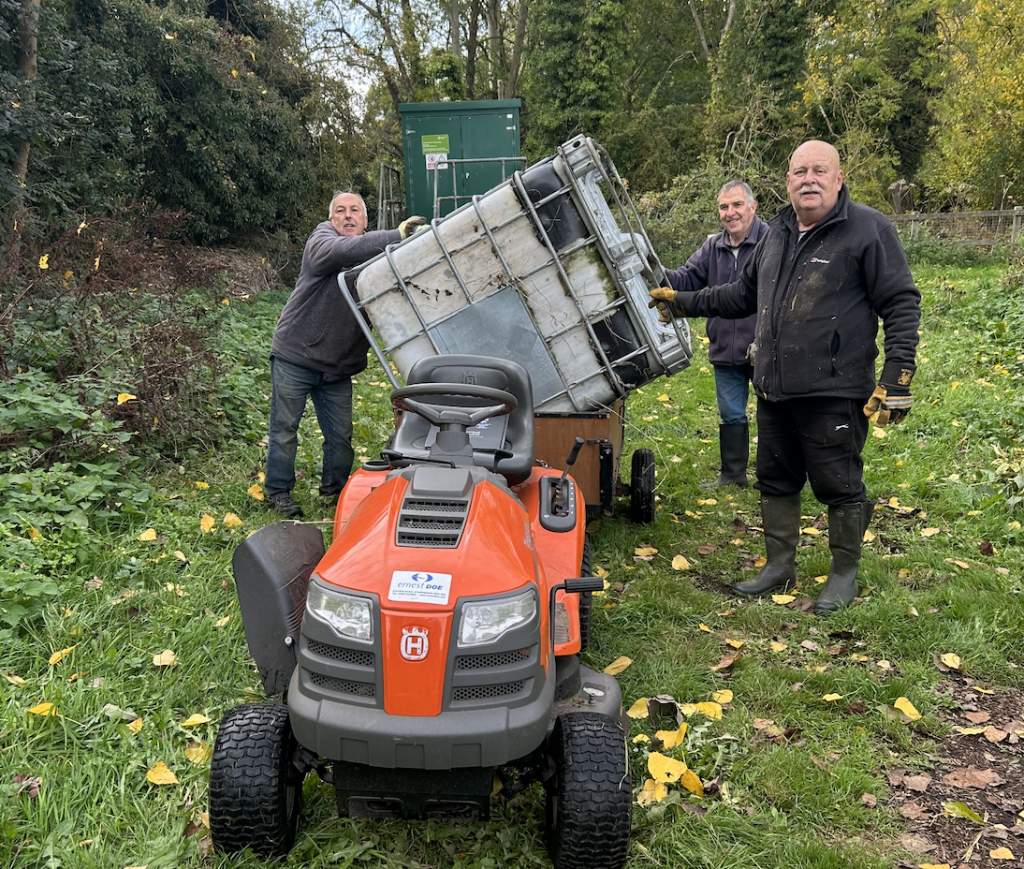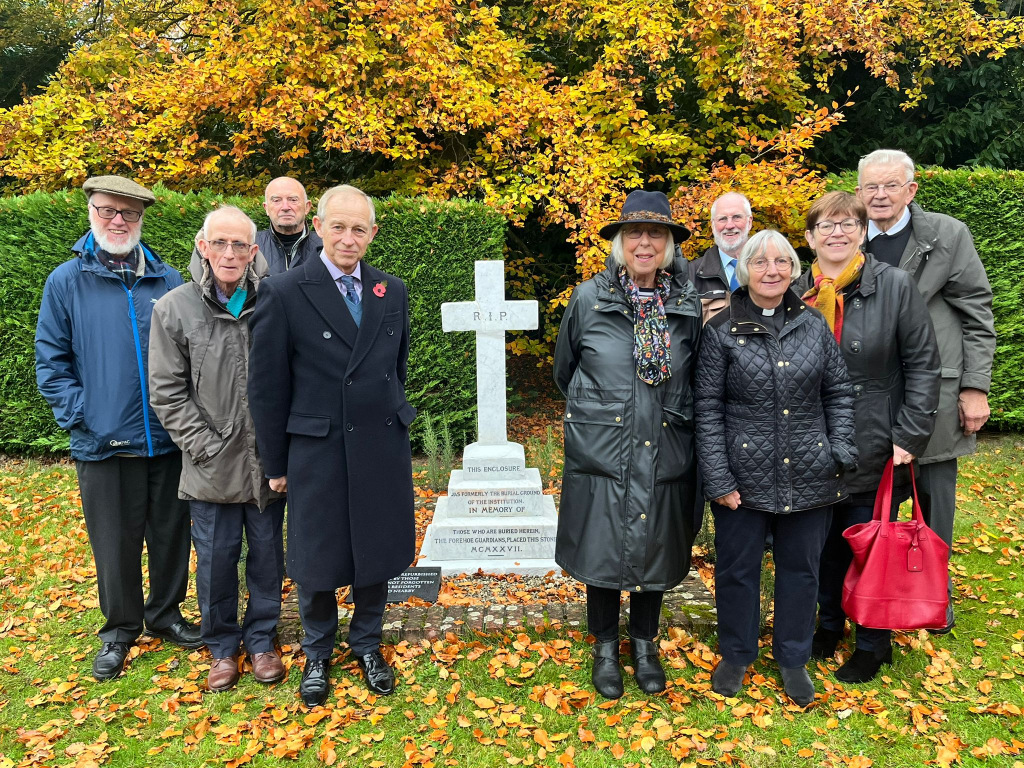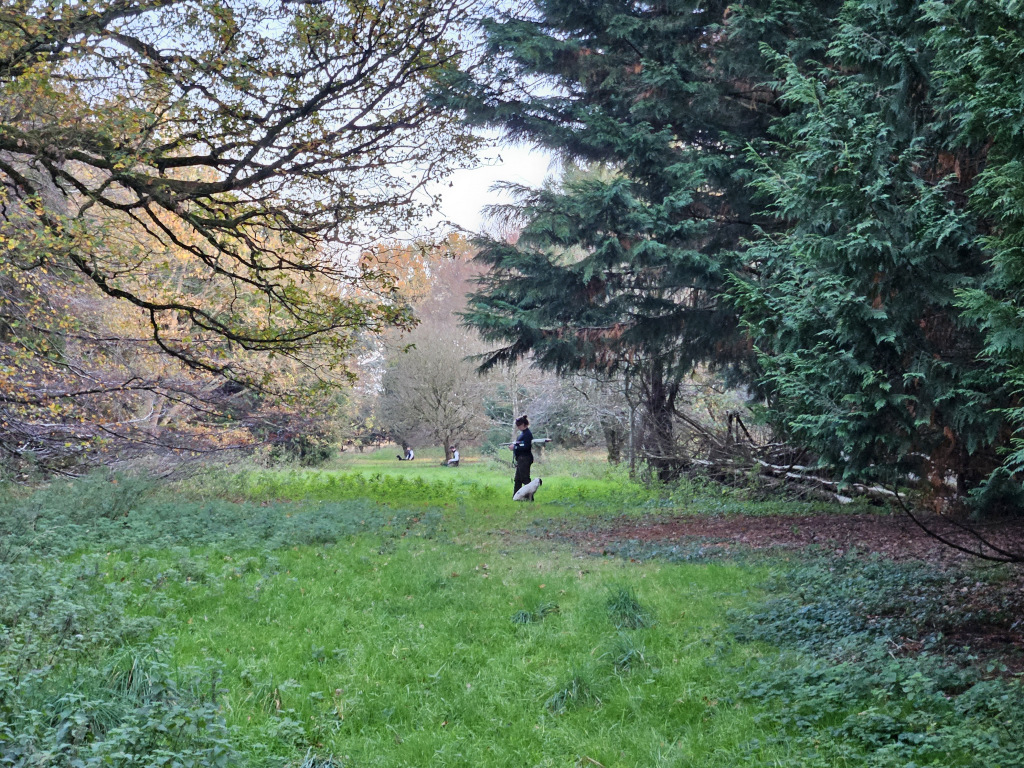I’ve been spring cleaning for a couple of weeks. This serves more than one purpose; a cleaner house, of course, and a de-clutter. Sometimes other things happen, and I am visited by a loved soul from the past.
I was pulling cushion covers off to wash. My tiniest cushion is one made by my step-grandmother, Marg, a handmade log-cabin-style quilt front with a black velvet back, 12 inches x 12 inches. I know I’ve washed this pillow cover before, yet something strange happened this time.
I pulled the little pillow out from the cushion cover. The cloth was an old sugar sack with words printed in pale blue: “DE CANNE PUR Fabrique au Canada SUCRE Fin…”. Also, written in pencil on the old sugar sack, “March 12, 1982 M Mc Cowan 7 Ann Street Seaforth.”
The memory video went into rewind, and I could see the white clapboard house as clear as my daffodils outside the window today. I was sitting on Grandad’s front porch, amid all of Grandma Marg’s beautiful plants. I recall sleeping in their guest room once, and Marg bringing a small heating pad to lay on the bed, warming it before I snuggled in. I can never remember Marg sitting idle. She was always doing her needlework, knitting, crocheting, or sewing quilt squares. So many memories flood my thoughts this morning since opening the log cabin cushion.
This is one of those patterns so steeped in tradition that I approach it almost in awe and reverence, for all the generations of families who slept snuggly under a Log Cabin quilt.

Log cabins may have been built in pioneer America, but the log cabin quilt pattern reaches back to Isle of Man and Ancient Egypt. From what I read, the red centre square represents the fireplace of the cabin. The light colours represent the side of the house in the sun. The dark colours represent the side of the house in the shade. The rule for quilting is the same as for carpentry: measure twice, cut once. Another interpretation is that the light colours represent happiness and the dark colours represent sorrow. Some families may have an imbalance of sorrow and happiness. The log cabin quilt demonstrates that in life, it all evens out eventually. When we look back over time, the sorrowful parts fade, and the happy life situations are remembered with more detail.
The British Quilt Heritage Project has examples of Log Cabin quilts dating from the first half of the 19th century.
The early quilts were almost always tied, not quilted, and made from scrappy materials of different weights, usually laid on a foundation fabric, making them very difficult to quilt. Often, several women of a community would come together, all of them working on the quilt at the same time, and chatting about their families.
This morning, I knew nothing about log cabin quilting, and when Marg came to me with her name on an old sugar bag, she inspired me to do some research and rewind my memories from fifty years ago, when she gave me this cushion, which I placed on a ‘spoon back’ chair.















